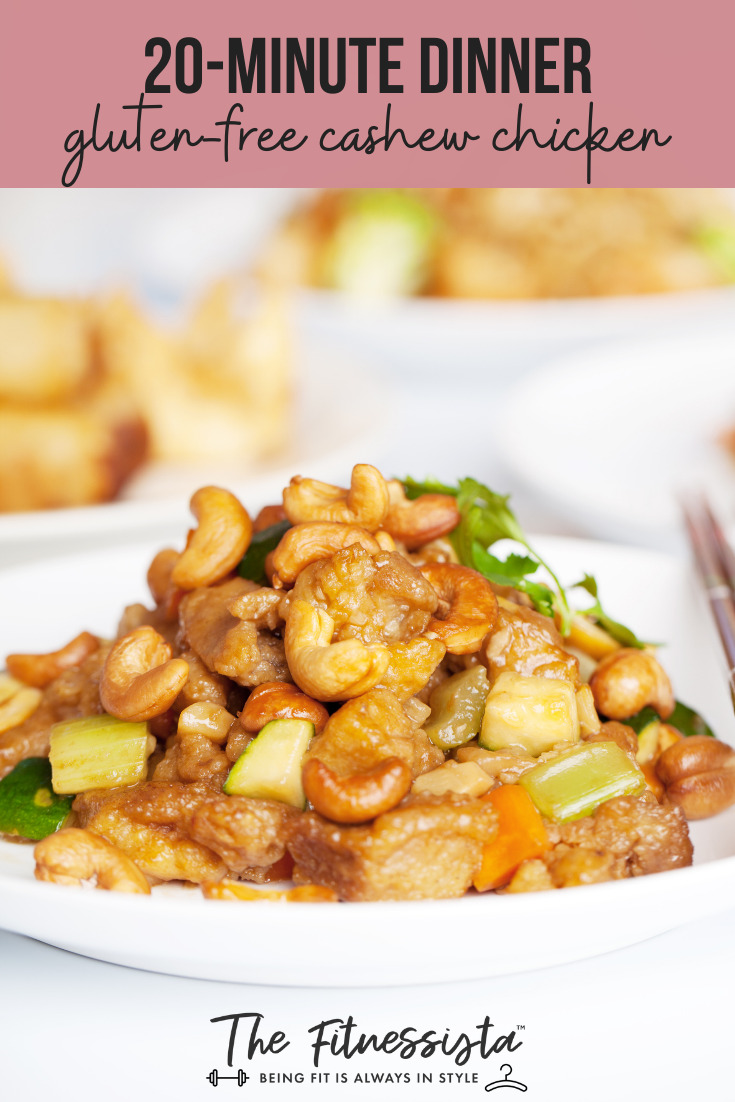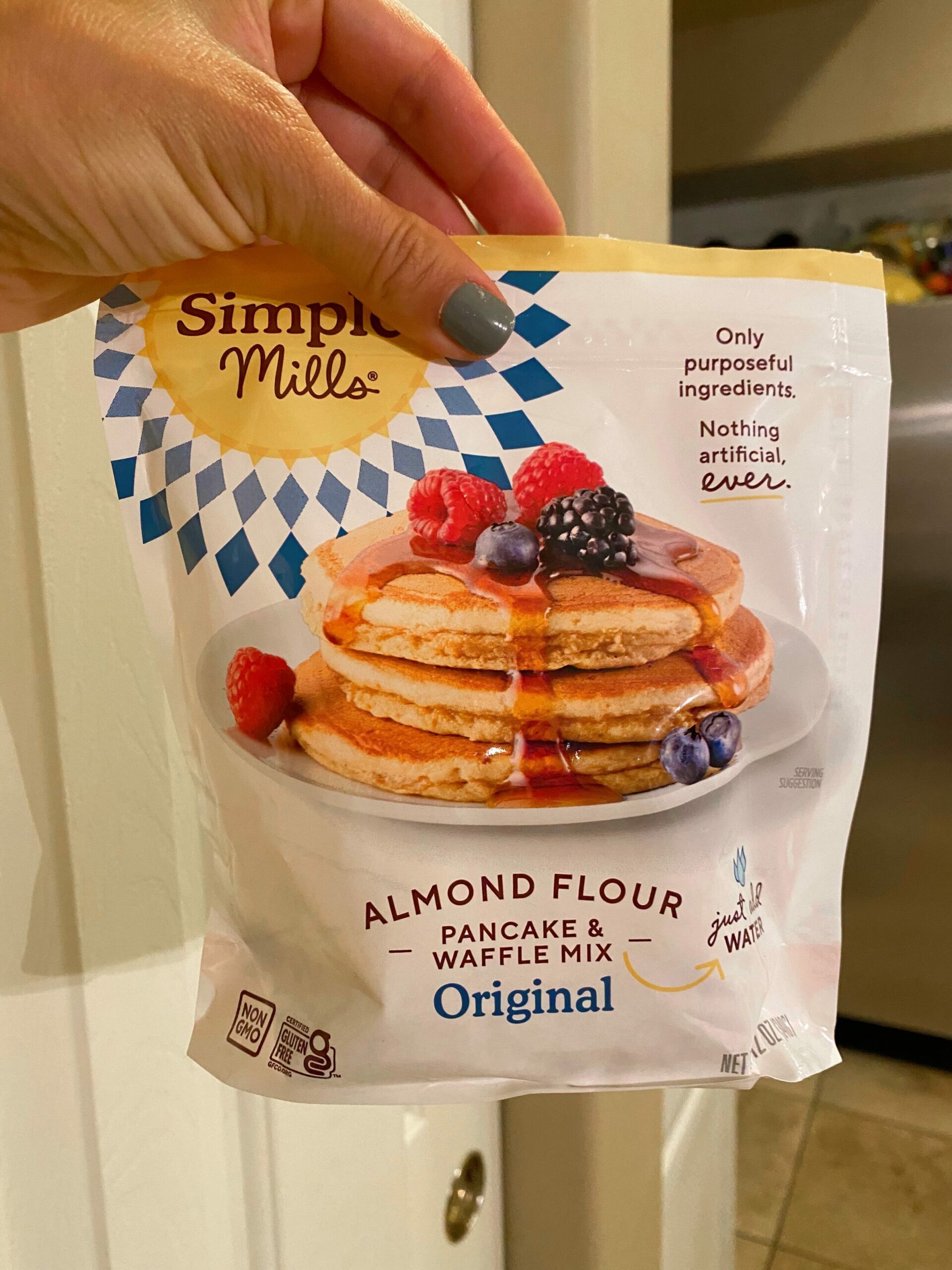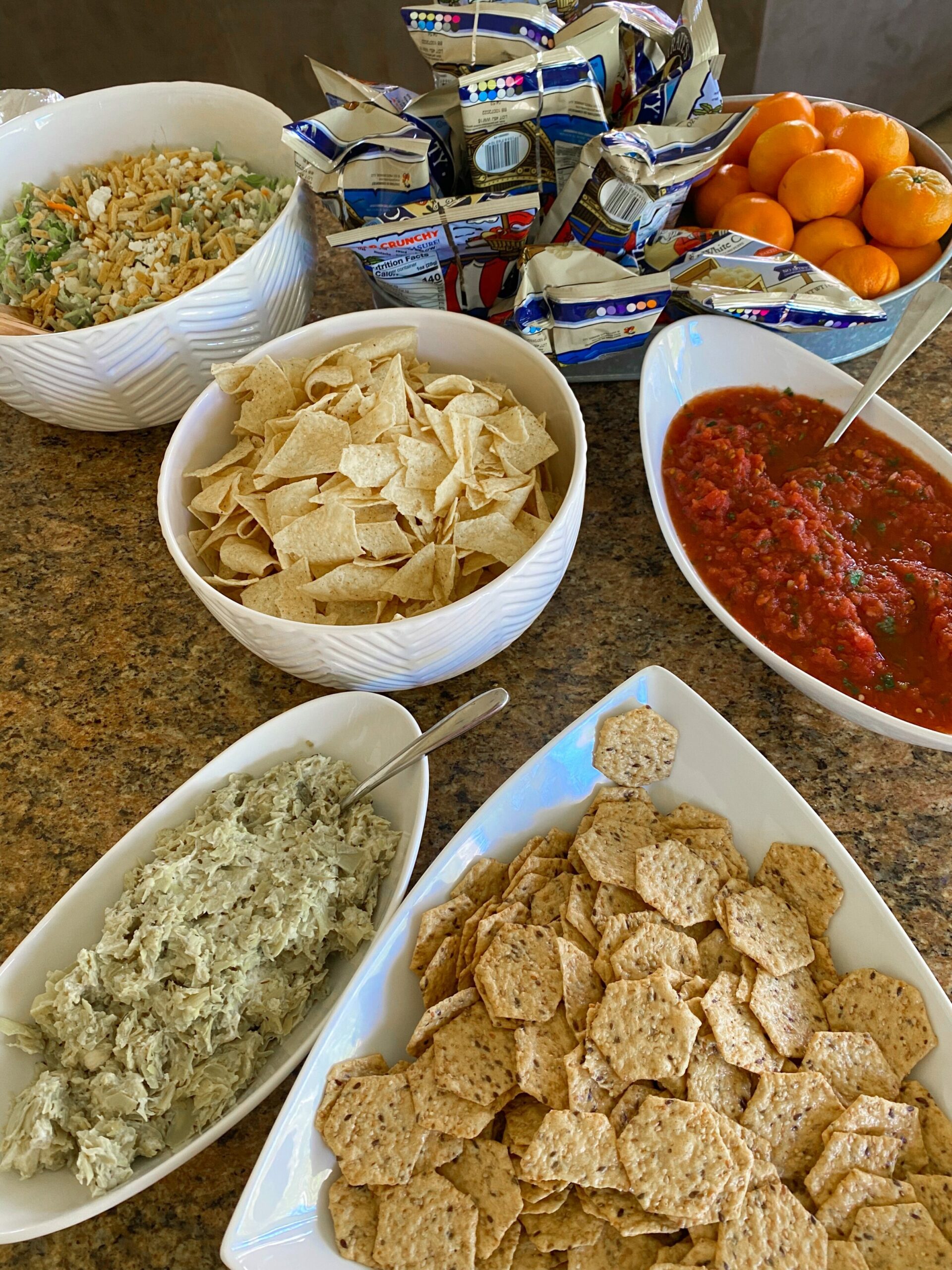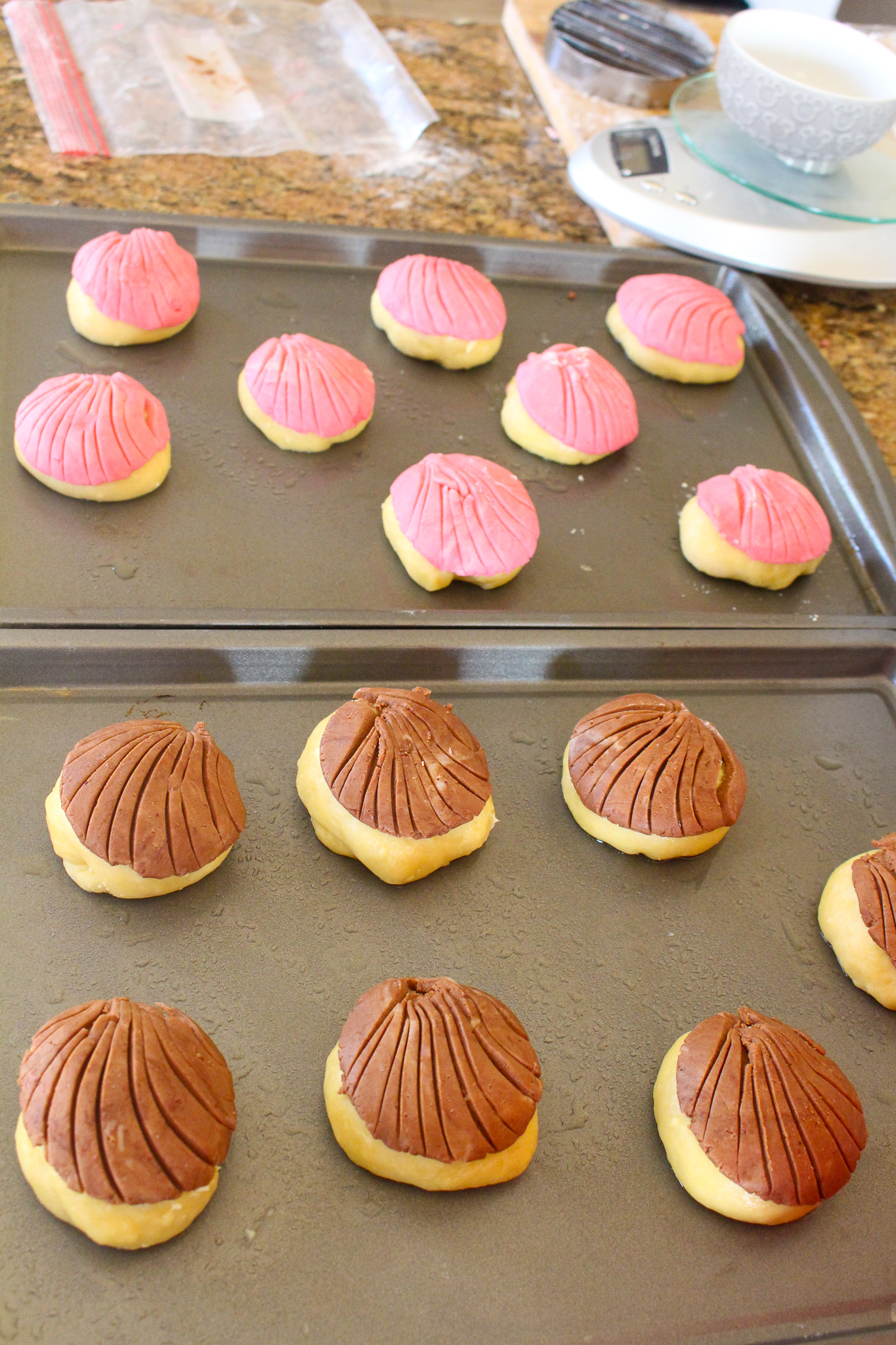Ready to work out Rocky-style? We put together a list of the 15 best punching bags for all budgets and skill levels. Hit the gym and your goals with style.
A peek at the 15 best punching bags
- Best adjustable weight punching bag: MaxxMMA Water/Air Heavy Bag
- Best leather punching bag: Jayefo Trexter Heavy Punching Bag
- Best punching bag alternative: Champs MMA Boxing Reflex Ball
- Best speed bag for beginners: Everlast Speed Bag
- Best double end punching bag: Pro Impact Genuine Leather Double End Boxing Punching Bag
- Best water-filled punching bag: Everlast HydroStrike Water Bag
- Quietest freestanding punching bag: Dripex Freestanding Punching Bag
- Best real-life experience: Century Bob Torso Training Bag
- Best heavy bag: Century Wavemaster XXL Training Bag
- Best kids hanging punching bag: RDX Kids Punching Bag
- Best for mixed martial arts: Everlast 70-Pound MMA Heavy Bag Kit
- Best punching bag station: Everlast 2-Station Gym
- Best freestanding punching bag for beginners: Century Original Wavemaster Freestanding Heavy Punching Bag
- Best punching bag stand for beginners: Tech Tools Punching Bag
- Best hanging punching bag for beginners: Everlast Nevatear Training Bag
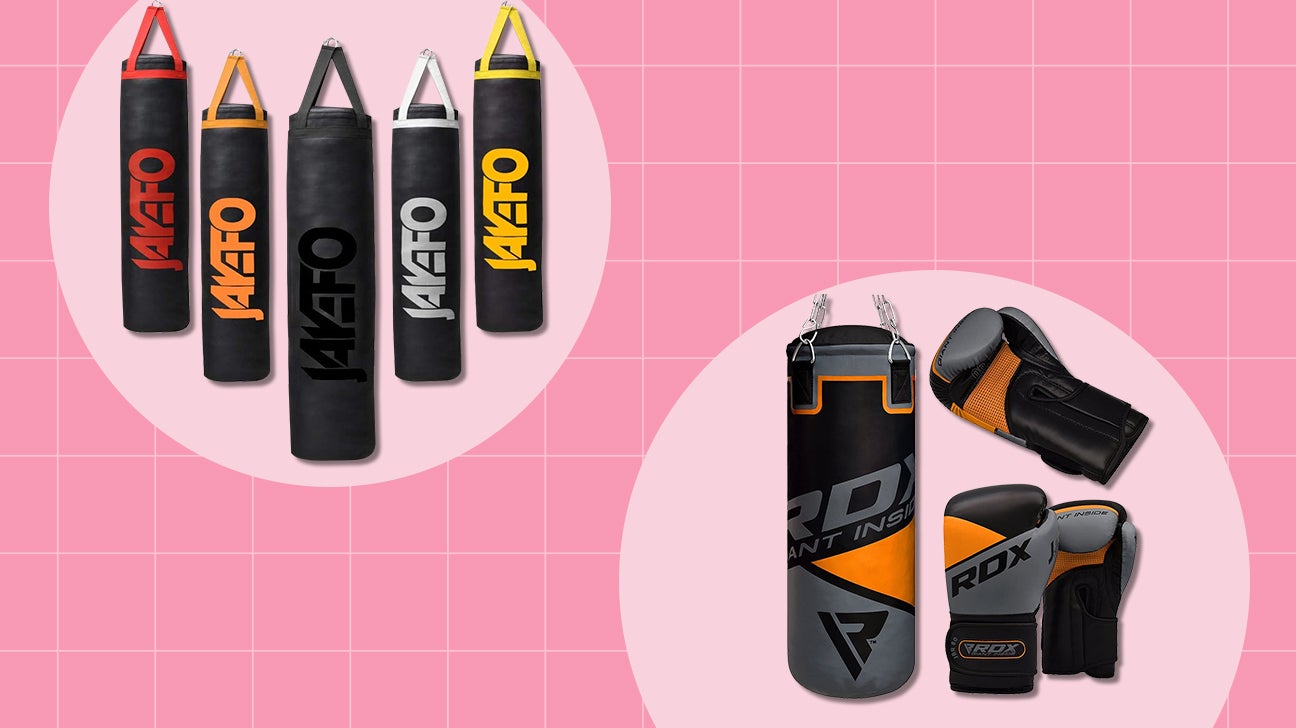
How we chose the best punching bags
- Bag type. We focused on the best bags for home workouts. We also chose bags designed to develop skill rather than strength and power.
- Bag material. Traditionally, leather is the crème de la crème of punching bags. It’s comfortable, durable, and (usually) PRICEY. So we picked high quality plastic and vinyl options too.
- Fill material. We selected a mix of sand, water, air, and fiber fills. It all comes down to what’s more comfortable for you.
- Price range. Just like there are different fitness levels for everyone, there are also different budgets. We tried to find some quality punching bag options at an array of price points.
Pricing guide
Here’s a price key to help you find the best bag for your body and budget.
- $ = under $100
- $$ = $100–$200
- $$$ = over $200
The best bags for your buck (under $100)
Best adjustable weight punching bag
Weight: 70–120 lbs.
Size: 3 ft.
With an adjustable weight, the MaxxMMA works for folks of various sizes and strengths. The patented water/air technology includes a welted PVC bladder, which helps you customize the weight to your size.
Bag bonus: The synthetic leather is durable and resists splitting and cracking.
Best leather punching bag
Weight: n/a
Size: 3, 4, or 6 ft.
This Muay Thai bag is narrower than the average heavy bag, so it’s better for mixed martial arts. The Jayefo Trexter comes unfilled, saving you some money up front. It’s made in three sizes — 3, 4, and 6 feet — and five colors.
P.S. The leather exterior and industrial-strength straps come with an impressive 10-year warranty.
Best punching bag alternative
Weight: N/A
Size: N/A
A reflex ball is a good punching bag alternative if you’re tight on cash and space. It’s also great for increasing your speed, timing, and reflexes. This set comes with an adjustable headband and three balls. You can work your way up to heavier balls when you’re ready.
The best punching bags for small spaces
Best speed bag for beginners
Weight: N/A
Size: 9 L x 6 W in.
Beginners get a chance to cut their teeth, er, knuckles on this medium-size bag. It’s great for building speed and shoulder endurance. You can refill the bladder as it starts to lose air (which it will every few days if used on the reg).
PSA: The tough leather exterior holds up well, but you need to buy the anchor hardware separately.
Best double end punching bag
Weight: 1 lb.
Size: 7 or 9 in.
Double end punching bags like the Pro Impact can improve hand speed and develop timing. It’s made of genuine leather with reinforced welted seams and loops, so it can def take a beating. You can choose either a 7- or 9-inch bag, based on your size and weight.
Best water-filled punching bag
Weight: 100 lbs. (filled)
Size: 28.3 in.
The HydroStrike isn’t as tall as a full-size heavy bag, but it has the same weight for a similar experience. The water absorbs the shock of each punch and mimics the feel of a human body. It comes with a nozzle, hanging bracket, and chain, so all you need to do is make sure it’s securely anchored to the ceiling.
FYI: It ships unfilled and tips the scales at 100 pounds once full.
The best freestanding punching bags
Quietest freestanding punching bag
Weight: 182 lbs. with sand, 137 lbs. with water
Size: 69 in.
The Dripex offers an incredibly stable base that can be filled with either sand or water (but sand is recommended). Twelve suction cups hold this 182-pound monster in place. The weight and height make it fab for the whole fam.
Our fave part is the shock absorbers that absorb the shock of impact and take pressure off your knuckles and wrists.
Best real-life experience
Weight: 270 lbs.
Size: 60–78 in.
Century Bob is a great workout buddy, especially if you want to practice self-defense. A realistic target lets you get a feel for the real deal without hurting a sparring partner. Bob adjusts from 60 to 74 inches in 6-inch increments. When loaded with sand, Bob comes in at 270 pounds.
Best heavy bag
Weight: 270 lbs.
Size: 69 in.
Ready to kick it up a notch? This 270-pound, 69-inch behemoth can take high kicks, punches, and everything in between. A wide, stable base keeps it upright even under heavy hits. The high density foam filling will protect your knuckles and wrists but still provides a real-deal experience.
The top hanging punching bags
Best kids hanging punching bag
Weight: Varies based on filling
Size: 2 ft.
Kids need a stable bag that lets them learn technique and correct form. Enter the RDX. The leather exterior offers a comfy surface that can take the learning hits of a newbie. It also comes with a pair of gel-padded boxing gloves that reduce strike shock.
Fair warning: The gloves are on the small side.
Best for mixed martial arts
Weight: 70 lbs.
Size: 3.5 ft.
The MMA Heavy Bag Kit lets you jump into mixed martial arts with a quality bag, hand wraps, and gloves. It includes a bungee cord so you can add resistance to the bag in case the 70-pound fill weight isn’t enough.
This model works with an Everlast stand or a ceiling anchor. The chain lets you adjust the height to fit your size too.
Best punching bag station
Weight: 280 lbs.
Size: Frame footprint 68 L x 44 W x 94.5 H in.
The Everlast 2-Station Gym gives you pro equipment and adjustment options in your home. You can focus on speed, endurance, timing, and strength every day. Yes, it’ll cost you. But it’s a dope investment if you’re super dedicated to the sport.
The best punching bags for beginners
Best freestanding punching bag for beginners
Weight: 270 lbs.
Size: 47–68 in.
Before you can “float like a butterfly and sting like a bee,” you need to learn the basics. This height-adjustable freestanding punching bag ranges from 47 to 68 inches and can be filled with sand or water. It also offers a flexible rebound that’s better for beginners.
Best punching bag stand for beginners
Weight: N/A
Height: 48–58 in.
This punching bag stand is a killer cardio workout. The inflatable bag sits on a spring-loaded shaft that builds timing and speed. The rebound effect will also help you develop more hand-eye coordination. Multiple users can adjust the height from 48 to 58 inches.
Best hanging punching bag for beginners
Weight: 100 lbs.
Size: 48.5 in.
Ready to try a heavy bag? At 100 pounds and 48.5 inches tall, the Nevatear is great for a newbie who’s ready to start building strength and endurance. The fabric/sand filling offers good weight and resistance. It also has the perfect amount of give for a realistic experience.
Bonus: It’s super affordable for a prefilled bag.
FAQs about punching up your workout with a punching bag
If you’re still on the fence about going all-in on a punching bag, we clear up some common questions here.
Is hitting a punching bag actually a good workout?
Absolutely. A boxing workout, which can include hitting a punching bag, is a great cardio, strength, and power training method. It doesn’t just work your arms, either. This type of activity also engages your obliques (abs), traps (trapezius muscle), and lower leg muscles to improve the range of motion in the whole body.
How many days per week can I work out on a punching bag, and for how long per day?
Unlike weightlifting, fitness pros say it’s cool to work out on a punching bag every day if your hands and wrists feel up to it. Although, you might want to stagger your sessions by a day or 2 at first to give your body time to adjust.
As far as session length, the general recommendation is 15 to 30 minutes — similar to most cardio workouts.
Do I need to have hand equipment to exercise on a punching bag?
So, you don’t necessarily need the fully-padded boxing gloves like the pros use in the ring in order to work a punching bag. However, some type of hand or wrist protection is highly recommended to protect your joints from any injuries due to strain.
If the punching bag you purchase doesn’t come with a set of gloves, a quality athletic wrist wrap or a pair of well-fitting sparring gloves should work fine.
Do I need to have a trainer before getting a punching bag?
Not unless you want one. Just like other forms of exercise, you can do this one solo or with some guidance. If you’re actually interested in learning how to box, a trainer or an instructional training program could be the way to go. But if you’re just looking to get your heart rate up or blow off some steam, have at it!
What else should I look for in a punching bag besides type?
Size and weight. Unless you’re working with one of those smaller hanging speed bags, a punching bag should be no less than about half your body weight. This prevents wild bag swings and offers muscle-producing resistance.
And speaking of resistance — you want your punching bag to have a little give to it so that it can absorb your punches without being too firm. No matter how strong you get, you don’t want to make a habit of punching columns.
Bottom line: If you choose a quality option, good fitness work is in the bag
Exercising with a punching bag is a great high intensity, low maintenance workout option for your entire body. With a boatload of different bag options available, selecting the right one for you should come down to your fitness and frequency goals, as well as your budget.
from Greatist Health RSS Feed https://bit.ly/2Y1wluK

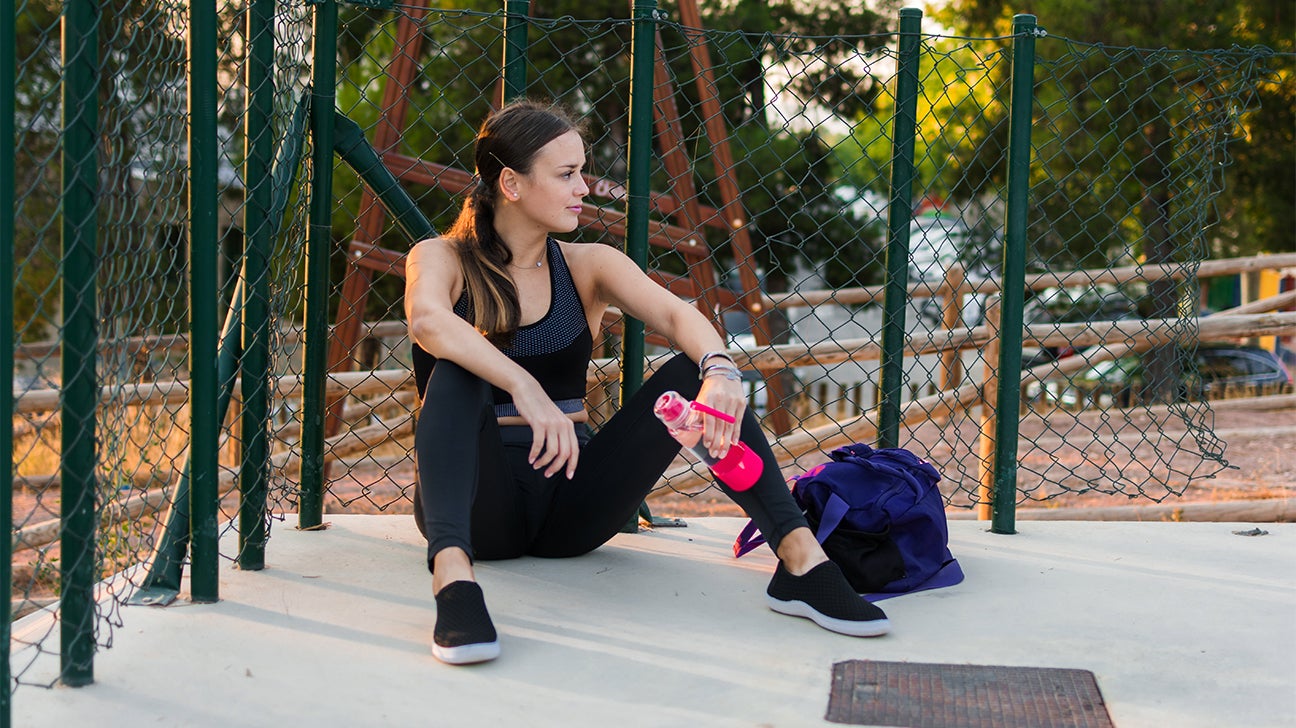
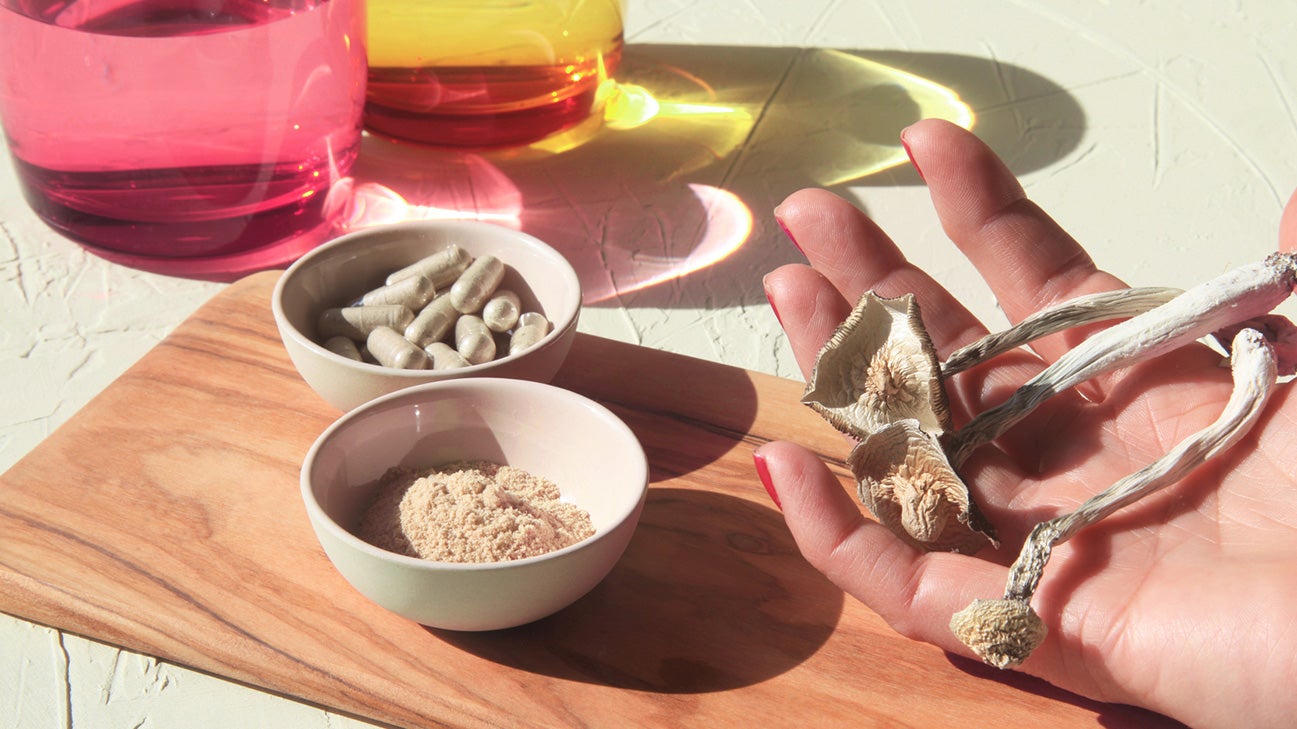


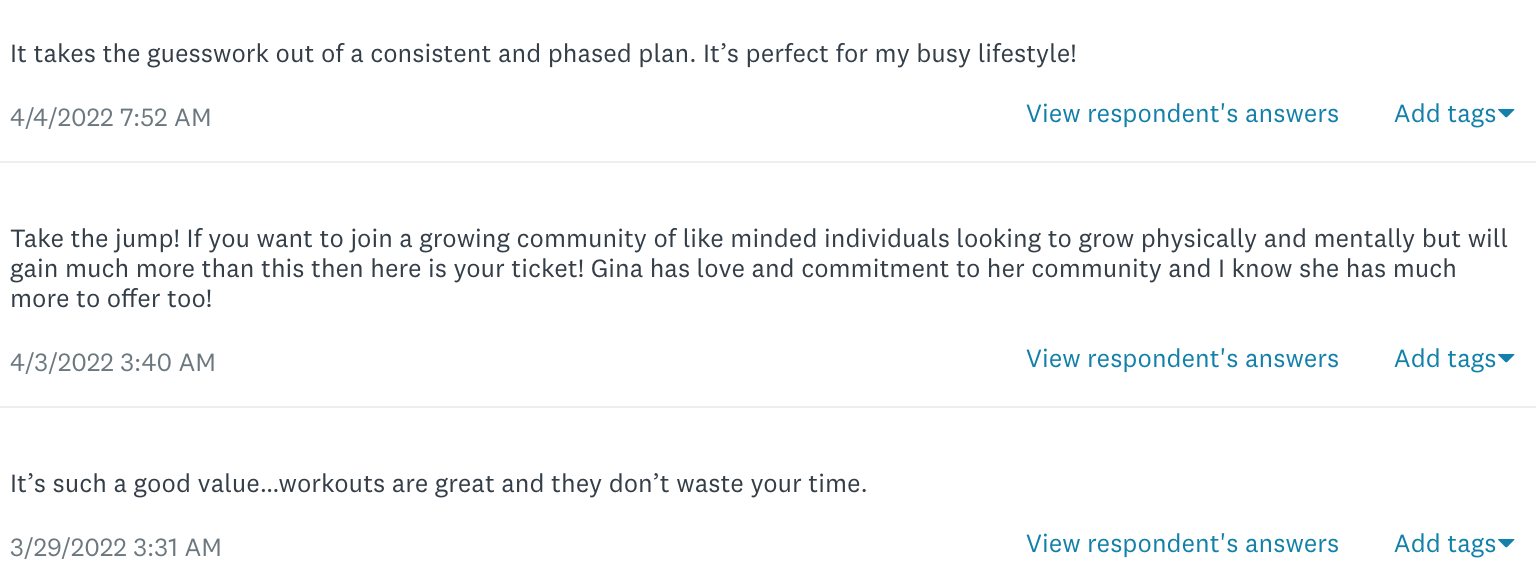
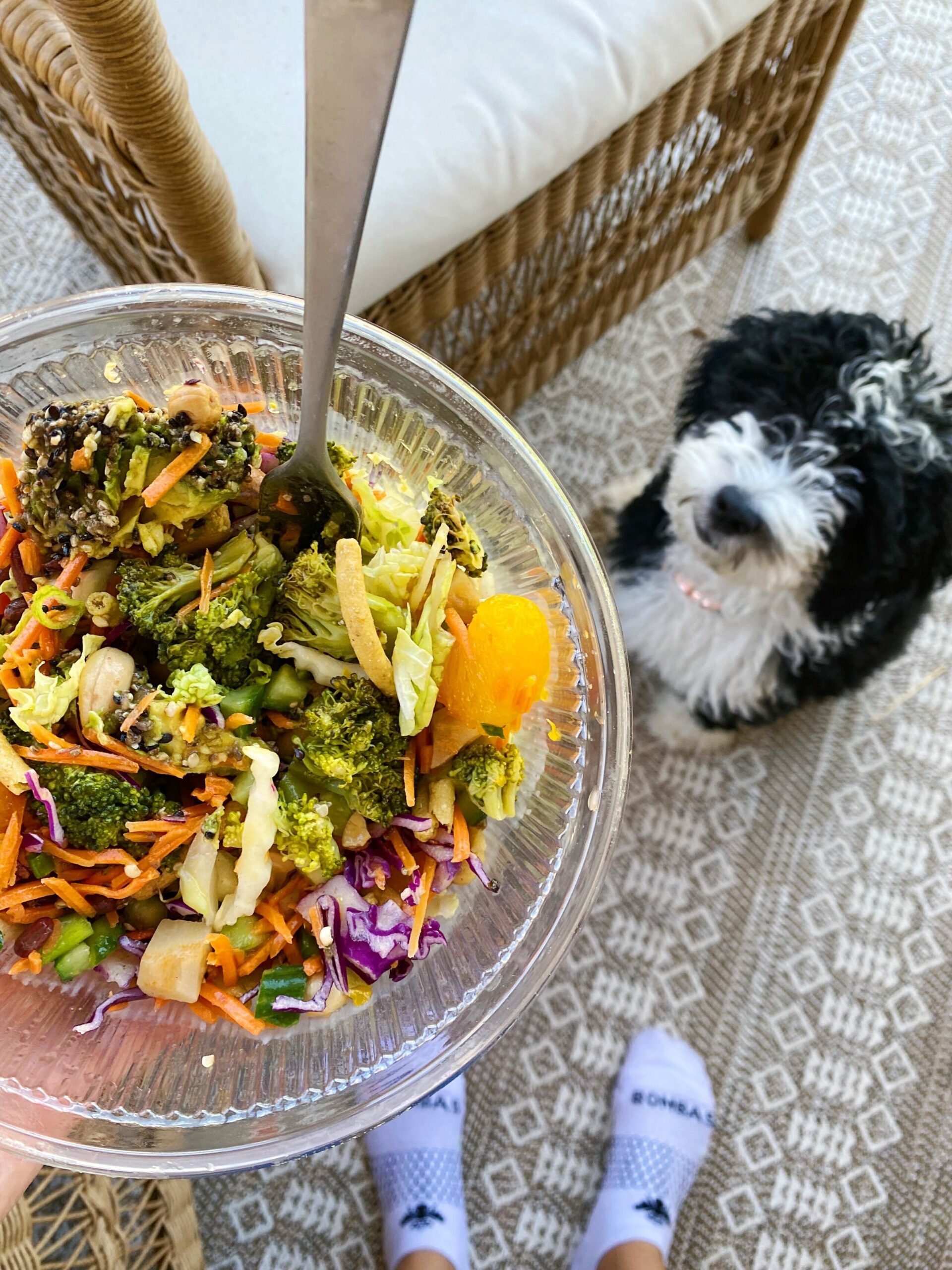
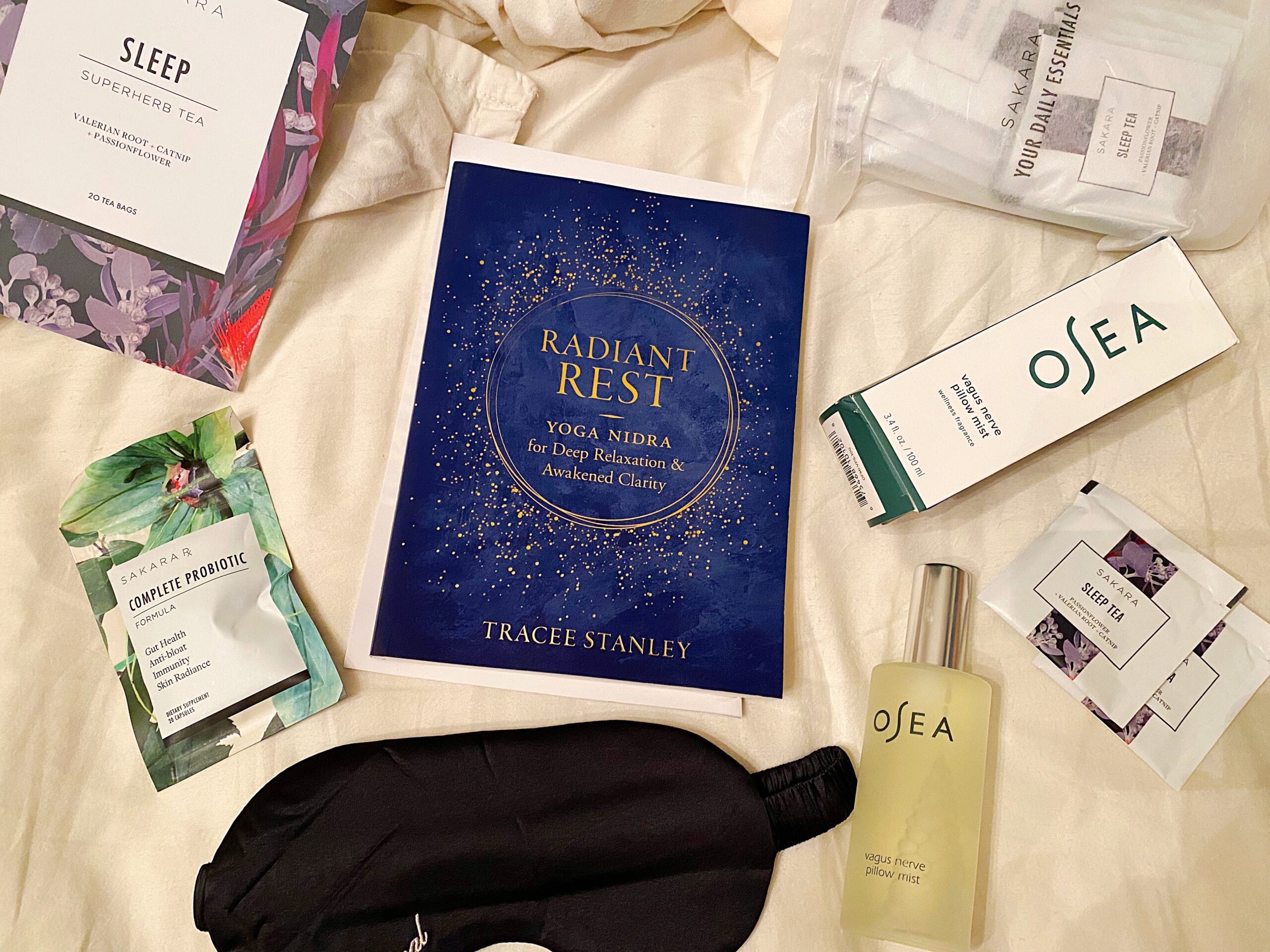 (PS
(PS 


